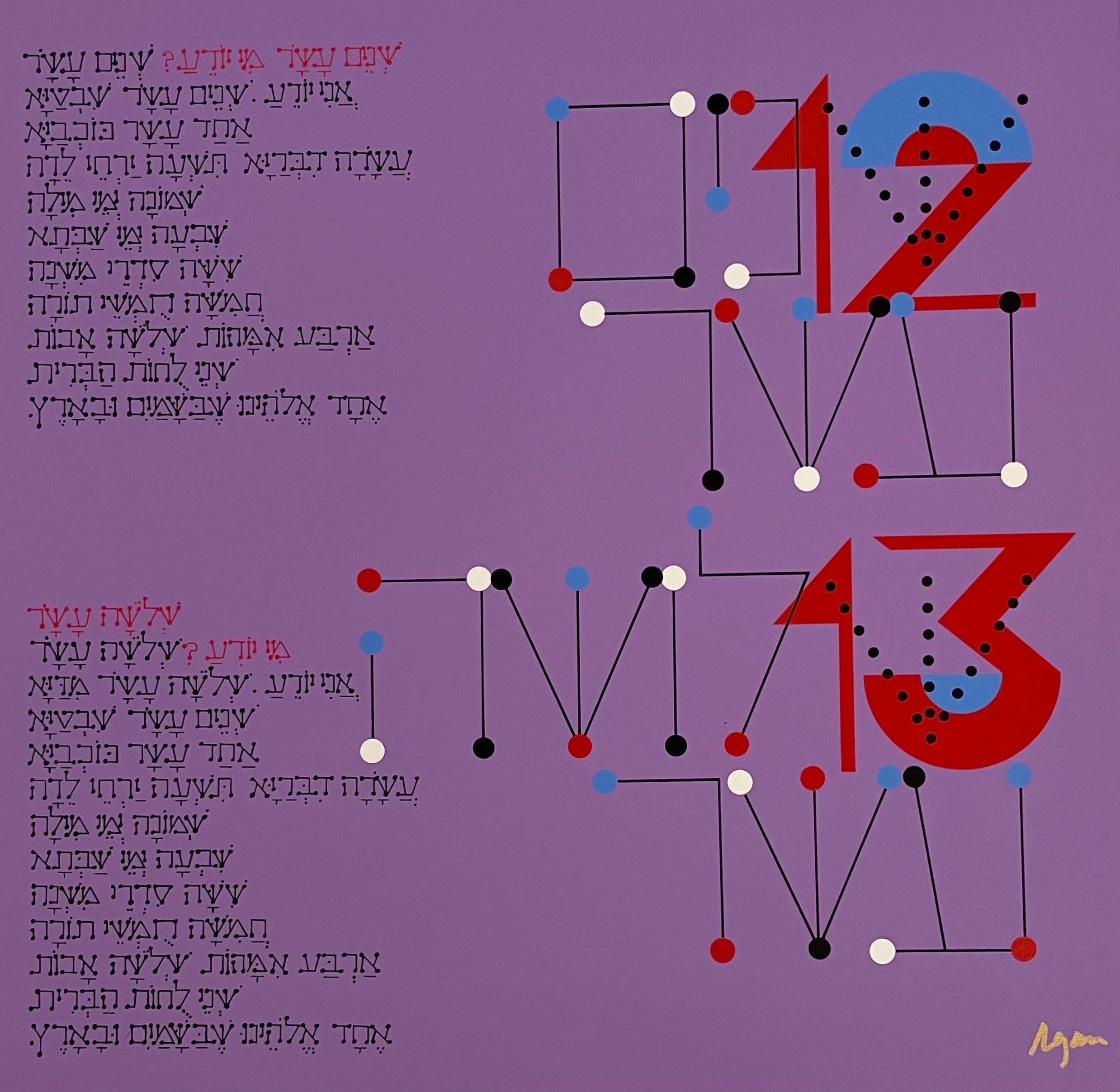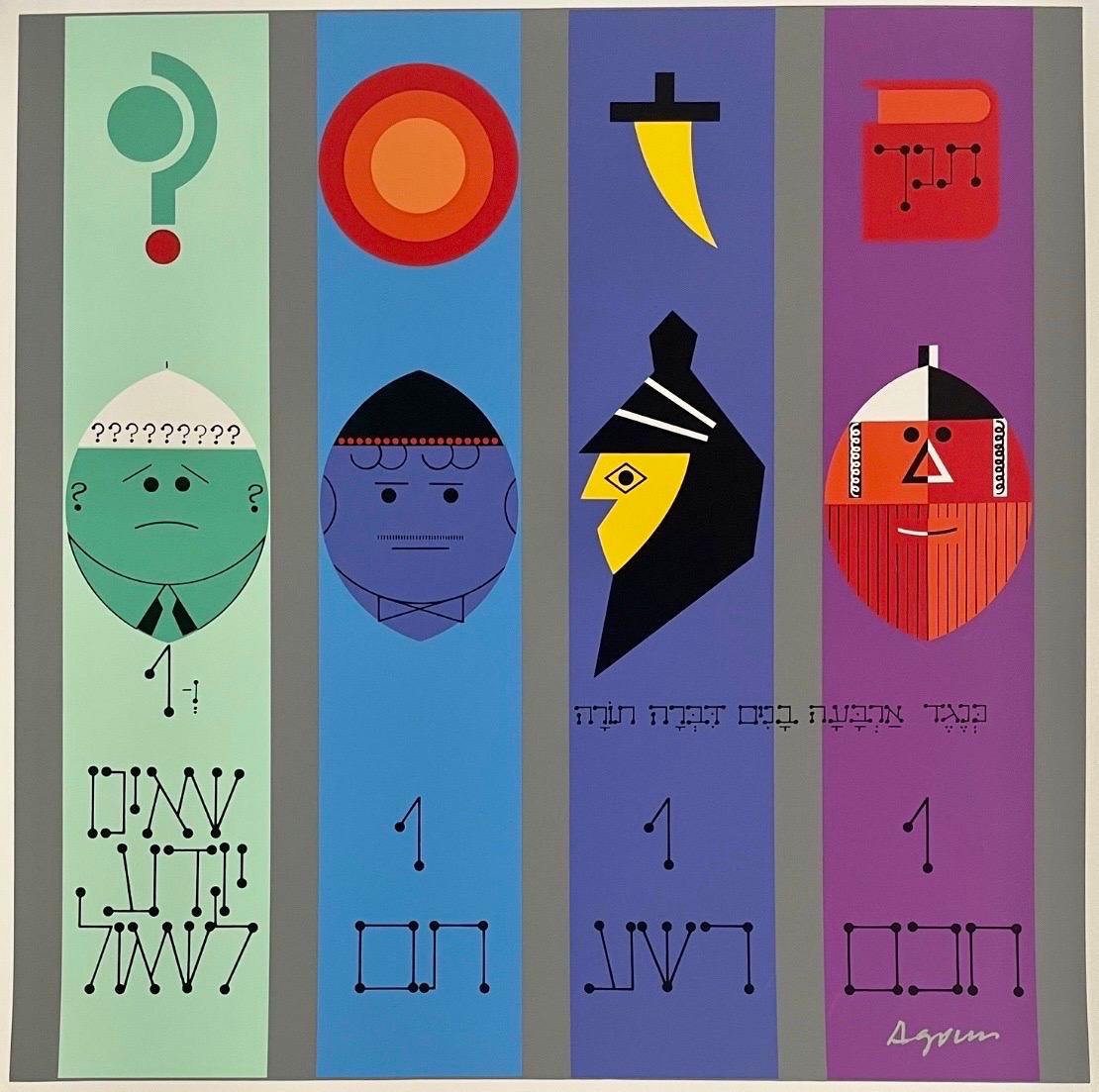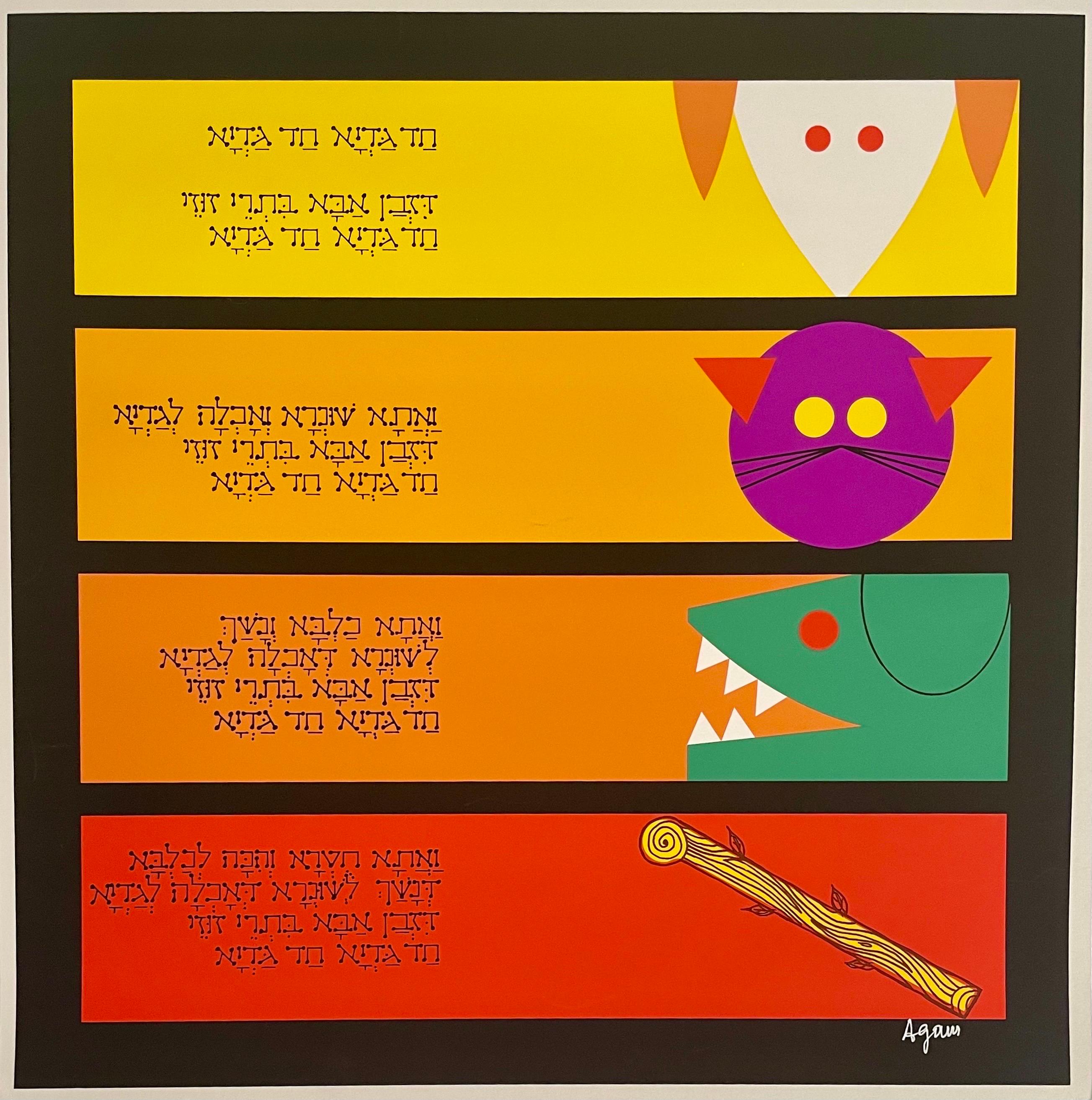Items Similar to Historic limited edition 1960s retrospective poster British Council Pop Op Art
Want more images or videos?
Request additional images or videos from the seller
1 of 8
Historic limited edition 1960s retrospective poster British Council Pop Op Art1978
1978
About the Item
After Bridget Riley
Bridget Riley Works 1959-1978: A Major Retrospective Exhibition, 1978
in collaboration with five international museums
Published by the Fine Arts Council UK
Offset lithograph
33 1/2 × 23 1/2 inches
Edition of 500
Unframed
Bridget Riley Biography
Riley was born at Norwood, London, the daughter of a businessman. Her childhood was spent in Cornwall and Lincolnshire. She studied at Goldsmiths' College from 1949 to 1952, and at the Royal College of Art from 1952 to 1955. She began painting figure subjects in a semi-impressionist manner, then changed to pointillism around 1958, mainly producing landscapes. In 1960 she evolved a style in which she explored the dynamic potentialities of optical phenomena. These so-called 'Op-art' pieces, such as Fall, 1963 (Tate Gallery T00616), produce a disorienting physical effect on the eye.
Riley taught children for two years before joining the Loughborough School of Art, where she initiated a basic design course in 1959. She then taught at Hornsey School of Art, and from 1962 at Croydon School of Art. She worked for the J. Walter Thompson Group advertising agency from 1960, but gave up teaching and advertising agency work in 1963-4.
Group shows include Young Contemporaries, London, 1955; Diversion, South London Art Gallery 1958; an Arts Council Touring Exhibition, 1962; Tooth's Critics Choice Exhibition, selected by Edward Lucie-Smith, 1963; John Moores' Exhibition, Liverpool, 1963; The New Generation, Whitechapel Gallery 1964; Movement, Hanover Gallery, London, 1964; Painting and Sculpture of a Decade 1954-1964, Tate Gallery, 1964; and Op Art, touring Ireland in 1967. Her numerous European and American exhibitions include The Sixties Collection Revisited, Aldrich Museum of Contemporary Art, Ridgefield, Connecticut, 1978.
Riley was awarded the AICA Critics Prize in 1963 and also that year a John Moores', Liverpool Open Section prize. In 1964 she was awarded a Peter Stuyvesant Foundation Travel bursary to the USA. In 1968 she won an International Painting Prize at the Venice Biennale.
Her first solo exhibition was held at Gallery One in 1962 with a second solo show the following year. Other solo shows were held at Nottingham University, 1963; Richard Feigen Gallery, New York and Feigen Palmer Gallery, Los Angeles, 1965; Museum of Modern Art, New York, with US tour, 1966; Venice Biennale, British Pavilion (with Phillip King), 1968; Hayward Gallery, London, 1971; National Gallery, Prague, 1971; Hayward Gallery and Kunsthalle Nuremberg, 1992; Kettle's Yard, Cambridge, 1995; and Waddington Galleries, London, 1996.
-Courtesy Tate Gallery
- Creation Year:1978
- Dimensions:Height: 33.5 in (85.09 cm)Width: 23.5 in (59.69 cm)
- Medium:
- Movement & Style:
- After:Bridget Riley (1931, British)
- Period:
- Condition:Good vintage condition with some overall creasing and handling (see photos).
- Gallery Location:New York, NY
- Reference Number:1stDibs: LU1745213900192
About the Seller
5.0
Platinum Seller
These expertly vetted sellers are 1stDibs' most experienced sellers and are rated highest by our customers.
Established in 2007
1stDibs seller since 2022
289 sales on 1stDibs
Typical response time: 1 hour
- ShippingRetrieving quote...Ships From: New York, NY
- Return PolicyA return for this item may be initiated within 1 day of delivery.
More From This SellerView All
- Bridget Riley Hand Signed by Bridget Riley Geometric Abstraction British Op ArtBy Bridget RileyLocated in New York, NYBridget Riley Flashback (Hand Signed), 2009 Offset Lithograph (hand signed by Bridget Riley) 27 × 27 inches Boldly signed in black marker on the front Unframed Signed by Bridget Riley in her inimitable hand on the occasion of this 2009-2010 exhibition at the Southampton City Art Gallery of works from the Arts Council of Great Britain collection. Bridget Riley Biography Bridget Riley's (b. 1931) abstract compositions yield a singular sense of visual pleasure for the viewer, a notion derived as much from the artist's formative encounters with Old Master and Impressionist painting as from her early experiences with nature. Since 1961, she has focused exclusively on seemingly simple geometric forms, such as lines, circles, curves, and squares, arrayed across a surface—whether a canvas, a wall, or paper—according to an internal logic. The resulting compositions actively engage the viewer, at times triggering sensations of vibration and movement. This sense of dynamism was explored to great effect in the artist's earliest black-and-white paintings, which established the basis of her enduring formal vocabulary. In 1967, Riley introduced color into her work, thus expanding the perceptual and optical possibilities of her compositions. Riley was born in 1931 in London, where she attended Goldsmiths College from 1949 to 1952 and the Royal College of Art from 1952 to 1955. Riley’s first solo exhibitions were held at Gallery One, London, in 1962 and 1963, followed by two exhibitions at Robert Fraser Gallery, London, in 1966 and 1967. She was also at that time included in numerous group exhibitions such as Towards Art?, Royal College of Art London (1962); The New Generation, Whitechapel Gallery, London (1964); and Painting and Sculpture of a Decade 1954–1964, Tate Gallery, London (1964). In 1965, her work was included in the now-seminal group exhibition The Responsive Eye, organized by William Seitz at The Museum of Modern Art, New York. In 1968, she represented Great Britain at the 34th Venice Biennale (along with Philip King), where she was the first living British painter to win the prestigious International Prize for Painting. Her first retrospective, covering the period from 1961 to 1970, opened at the Kunstverein Hannover in 1971 and subsequently traveled to Kunsthalle Bern; Kunsthalle Düsseldorf; Galleria Civica d’Arte Moderna, Turin; and the Hayward Gallery, London. More recent significant solo presentations include those at Dia Center for the Arts, New York (2000-2001); Museum Haus Esters and Kaiser Wilhelm Museum, Krefeld, Germany (2002); Museum of Contemporary Art, Sydney (2004-2005); Musée d'Art Moderne de la Ville de Paris (2008); Walker Art Gallery, Liverpool (traveled to Birmingham Museums and Art Gallery; Norwich Castle Museum and Art Gallery; Southampton City Art Gallery; 2009-2010); The National Gallery, London (2010-2011); Art Institute of Chicago (2014-2015); The Courtauld Gallery, London (2015); De La Warr...Category
Early 2000s Op Art Abstract Prints
MaterialsLithograph, Offset
- The Paris Review, signed and numbered 1960s Op Art geometric abstraction printBy Richard AnuszkiewiczLocated in New York, NYRichard Anuszkiewicz The Paris Review, 1965 Silkscreen on Beckett 90 lb. Hi-White paper with vellum finish 31 × 26 inches Edition 23/150 Signed lower left; dated and numbered lower r...Category
1960s Op Art Abstract Prints
MaterialsPencil, Screen
- Untitled (from Rubber Stamp Portfolio) Lt. Ed Abstract 1970s print with envelopeBy Myron Stedman StoutLocated in New York, NYMyron Stout Untitled (from Rubber Stamp Portfolio), 1976 Rubber Stamp Print on Buckeye Paper 8 × 8 inches Limited Edition of 1000 Stamped with a...Category
1970s Abstract Abstract Prints
MaterialsLithograph, Offset, Other Medium
- Kind of Blue (Hand signed and dated card depicting his sculpture)By Richard DeaconLocated in New York, NYRichard Deacon Kind of Blue (Hand Signed and Dated card), 2005 Offset lithograph postcard Boldly signed and dated 9-01-05 by the artit above the image of the sculpture 5 4/5 × 4 1/...Category
Early 2000s Contemporary Abstract Prints
MaterialsPostcard, Lithograph, Offset
- Peter Halley, Jablonka Galerie, Köln rare exhibition poster (Hand Signed)By Peter HalleyLocated in New York, NYPeter Halley Jablonka Galerie, Köln (Hand Signed), 1990 Offset lithograph (Hand Signed by Peter Halley) 26 1/2 × 30 inches (ships rolled in a tube 37 x 6 x 6) Signed by Peter Halley ...Category
1990s Abstract Geometric Abstract Prints
MaterialsOffset, Permanent Marker, Lithograph
- Attica Defense FundBy Frank StellaLocated in New York, NYFrank Stella Attica Defense Fund print, 1974 Offset lithograph print on high quality lithographic paper 29 1/2 × 29 1/2 in 74.9 × 74.9 cm Limited Edition of 3000 Published by Attica...Category
1970s Abstract Geometric Abstract Prints
MaterialsOffset, Lithograph
You May Also Like
- Grey Tinted RainbowBy Richard AnuszkiewiczLocated in Santa Fe, NMEdition on hand is HC 2/3. Printed at Graphicstudio in Florida, this combination print by Richard Anuszkiewicz was printed with a set of two other editions in 1991. This work is comp...Category
1990s Op Art Abstract Prints
MaterialsLithograph, Screen
- Agam Silkscreen Mod Judaica Lithograph Hand Signed Israeli Kinetic Op Art PrintBy Yaacov AgamLocated in Surfside, FLYaacov Agam Israeli (b. 1928) Hand signed, not individually numbered but from edition of 180. I can include a copy of the title sheet with the edition size and his signature if you request. sheet: 13.5 X 13.5 inches Some of these works have beautiful Hebrew calligraphy and mod imagery, animals, children and such that are not usually found in his work. This is a masterpiece of bold, graphic, mod design. Along with Reuven Rubin and Menashe Kadishman he is among Israel's best known artists internationally. Biographical info: The son of a rabbi, Yaacov Agam can trace his ancestry back six generations to the founder of the Chabad movement in Judaism. in 1946, he entered the Bezalel Academy of Arts and Design in Jerusalem. Studying with Mordecai Ardon, a former student at the Weimar Bauhaus. Yaakov Agam has been associated h with “abstract” artists, “hard edge” artists, and artists such as Josef Albers and Max Bill. Others find in Agam’s work an indebtedness to the masters of the Bauhaus. Agam’s approach to art, being conceptual in nature, has been likened to Marcel Duchamp’s, who expressed the need to put art “at the service of the spirit.” And, because of Agam’s employment of color and motion in his art, he has been compared to Alexander Calder, the artist who put sculpture into motion. (Motion is not an end, but a means for Agam. Calder’s mobiles are structures that are fixed, revolving at the whim of the wind. In a work by Agam, the viewer must intervene.) Agam has also been classified as an “op art” artist because he excels in playing with our visual sensitivities. Agam went to Zurich to study with Johannes Itten at the Kunstgewerbeschule. There, he met Frank Lloyd Wright and Siegfried Giedion, whose ideas on the element of time in art and architecture impressed him. In 1955, Galerie Denise René hosted a major group exhibition in connection with Vasarely's painting experiments with movement. in addition to art by Vasarely, it included works by Yaacov Agam, Pol Bury, Soto and Jean Tinguely, among others. Most Americans were first introduced to Vasarely by the groundbreaking exhibition, "The Responsive Eye," at New York's Museum of Modern Art in 1965. Josef Albers, Richard Anuszkiewicz. The show confirmed Vasarely's international reputation as the father of Op art. Agam has sought to express his ideas in a non-static form of art. In his abstract Kinetic works, which range from paintings and graphics to sculptural installations and building facades. Agam continually seeks to explore new possibilities in form and color and to involve the viewer in all aspects of the artistic process. Thus, for the past 40 years, Yaacov Agam’s pioneering ideas have impacted developments in art, (painting, monoprint, lithograph and agamograph) architecture, theatre, and public sculpture. Reflecting both his Israeli Jewish...Category
1980s Op Art Abstract Prints
MaterialsLithograph, Screen
- Agam Silkscreen Jerusalem Lithograph Hand Signed Israeli Kinetic Op Art PrintBy Yaacov AgamLocated in Surfside, FLYaacov Agam, Israeli (b. 1928) Hand signed, not individually numbered but from edition of 180. I can include a copy of the title sheet with the edition size and his signature if you ...Category
1980s Op Art Abstract Prints
MaterialsLithograph, Screen
- Agam Silkscreen Mod Judaica Lithograph Hand Signed Israeli Kinetic Op Art PrintBy Yaacov AgamLocated in Surfside, FLYaacov Agam Israeli (b. 1928) Hand signed, not individually numbered but from edition of 180. I can include a copy of the title sheet with the edition size and his signature if you request. sheet: 13.5 X 13.5 inches Some of these works have beautiful Hebrew calligraphy and mod imagery, animals and such that are not usually found in his work. This is a masterpiece of bold, graphic, mod design. Along with Reuven Rubin and Menashe Kadishman he is among Israel's best known artists internationally. Biographical info: The son of a rabbi, Yaacov Agam can trace his ancestry back six generations to the founder of the Chabad movement in Judaism. in 1946, he entered the Bezalel Academy of Arts and Design in Jerusalem. Studying with Mordecai Ardon, a former student at the Weimar Bauhaus. Yaakov Agam has been associated h with “abstract” artists, “hard edge” artists, and artists such as Josef Albers and Max Bill. Others find in Agam’s work an indebtedness to the masters of the Bauhaus. Agam’s approach to art, being conceptual in nature, has been likened to Marcel Duchamp’s, who expressed the need to put art “at the service of the spirit.” And, because of Agam’s employment of color and motion in his art, he has been compared to Alexander Calder, the artist who put sculpture into motion. (Motion is not an end, but a means for Agam. Calder’s mobiles are structures that are fixed, revolving at the whim of the wind. In a work by Agam, the viewer must intervene.) Agam has also been classified as an “op art” artist because he excels in playing with our visual sensitivities. Agam went to Zurich to study with Johannes Itten at the Kunstgewerbeschule. There, he met Frank Lloyd Wright and Siegfried Giedion, whose ideas on the element of time in art and architecture impressed him. In 1955, Galerie Denise René hosted a major group exhibition in connection with Vasarely's painting experiments with movement. in addition to art by Vasarely, it included works by Yaacov Agam, Pol Bury, Soto and Jean Tinguely, among others. Most Americans were first introduced to Vasarely by the groundbreaking exhibition, "The Responsive Eye," at New York's Museum of Modern Art in 1965. Josef Albers, Richard Anuszkiewicz. The show confirmed Vasarely's international reputation as the father of Op art. Agam has sought to express his ideas in a non-static form of art. In his abstract Kinetic works, which range from paintings and graphics to sculptural installations and building facades. Agam continually seeks to explore new possibilities in form and color and to involve the viewer in all aspects of the artistic process. Thus, for the past 40 years, Yaacov Agam’s pioneering ideas have impacted developments in art, (painting, monoprint, lithograph and agamograph) architecture, theatre, and public sculpture. Reflecting both his Israeli Jewish...Category
1980s Op Art Abstract Prints
MaterialsLithograph, Screen
- Agam Silkscreen Mod Judaica Lithograph Hand Signed Israeli Kinetic Op Art PrintBy Yaacov AgamLocated in Surfside, FLYaacov Agam Israeli (b. 1928) Hand signed, not individually numbered but from edition of 180. I can include a copy of the title sheet with the edition size and his signature if you r...Category
1980s Op Art Abstract Prints
MaterialsLithograph, Screen
- Agam Silkscreen Mod Judaica Lithograph Hand Signed Israeli Kinetic Op Art PrintBy Yaacov AgamLocated in Surfside, FLYaacov Agam Israeli (b. 1928) Hand signed, not individually numbered but from edition of 180. I can include a copy of the title sheet with the edition size and his signature if you r...Category
1980s Op Art Abstract Prints
MaterialsLithograph, Screen





